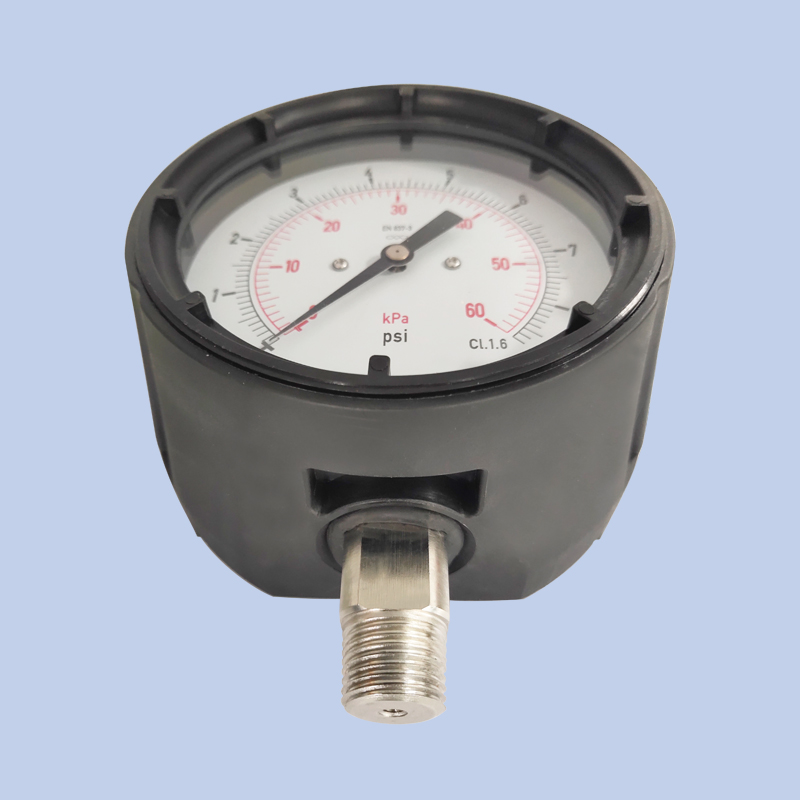
Nov . 26, 2024 05:05 Back to list
differential presure gauge jah
Understanding Differential Pressure Gauges A Comprehensive Overview
Differential pressure gauges are essential instruments used in various industries to measure the difference in pressure between two points. These gauges play a crucial role in monitoring and controlling processes in sectors such as pharmaceuticals, water treatment, HVAC, and oil and gas. In this article, we will delve into the working principles, applications, and advantages of differential pressure gauges, as well as considerations for their proper use.
Working Principle
A differential pressure gauge operates on a straightforward principle it measures the pressure difference between two points in a system. This is achieved through the use of sensing elements, typically flexible diaphragms or capsules, that respond to pressure variations. When pressure is applied to these elements, they deform, and this deformation is translated into a readable format, often as a displacement mechanism that moves a pointer across a calibrated scale.
Most differential pressure gauges come with two ports one for the high-pressure side and one for the low-pressure side. The gauge calculates the pressure difference (ΔP = P1 - P2) and displays the result. Some advanced models may employ electronic sensors that provide digital readings and can offer additional features such as data logging and remote monitoring.
Applications
The applications of differential pressure gauges are extensive. In the pharmaceutical industry, they are critical for ensuring proper airflow in cleanrooms and isolators, where maintaining specific pressure conditions helps prevent contamination. In HVAC systems, they are used to monitor filter pressure drop, indicating when filters need cleaning or replacement, which ensures optimal airflow and energy efficiency.
In the oil and gas industry, differential pressure gauges are crucial for monitoring flow rates and ensuring safe operation of pipelines. They also play a key role in water treatment plants, allowing operators to measure pressure changes across filters and membranes, indicating when maintenance is required.
differential presure gauge jah

Advantages of Differential Pressure Gauges
One of the primary advantages of differential pressure gauges is their ability to provide real-time monitoring of critical processes. This capability helps operators make timely decisions that can enhance efficiency, safety, and compliance with regulatory standards. Furthermore, these gauges can detect leaks, blockages, or other irregularities that may indicate a need for maintenance.
Another significant advantage is their versatility. Differential pressure gauges can measure a wide range of pressures and can be used with various fluids, including gases and liquids. They are available in different configurations and materials, making them suitable for harsh environments, such as high temperatures or corrosive substances.
Considerations for Use
When selecting a differential pressure gauge, it’s essential to consider several factors. Accuracy is paramount, so choosing a gauge with an appropriate measurement range and resolution for the application is critical. Additionally, compatibility with the media being measured must not be overlooked to avoid corrosion or damage to the gauge.
Calibration and maintenance are also crucial for ensuring accurate and reliable readings. Regular calibration against known pressure standards helps maintain the gauge's precision, while periodic inspections can identify any wear or tear that could affect performance.
Conclusion
Differential pressure gauges are indispensable tools that enhance operational efficiency across various industries. By accurately measuring pressure differences, they help ensure optimal process conditions, compliance with regulations, and safety in operations. Understanding their working principles, applications, and maintenance considerations can significantly improve the implementation and effectiveness of these instruments in both industrial and environmental settings. As technology continues to evolve, the future of differential pressure measurement promises even more sophisticated capabilities, further supporting the demands of modern industries.
-
High-Precision Mass Diaphragm Pressure Gauge - Reliable & Durable Solutions
NewsJun.10,2025
-
Explain Diaphragm Pressure Gauge Expert Guide, Top Manufacturers & Quotes
NewsJun.10,2025
-
Affordable Differential Pressure Gauge Prices in China Top Manufacturers
NewsJun.10,2025
-
Reliable Water Fire Extinguisher Pressure Gauges for Safety
NewsJun.10,2025
-
Durable Diaphragm Protection Pressure Gauges Get Quote
NewsJun.09,2025
-
WIKA Differential Pressure Gauge with Switch Reliable Monitoring & Control
NewsJun.09,2025
